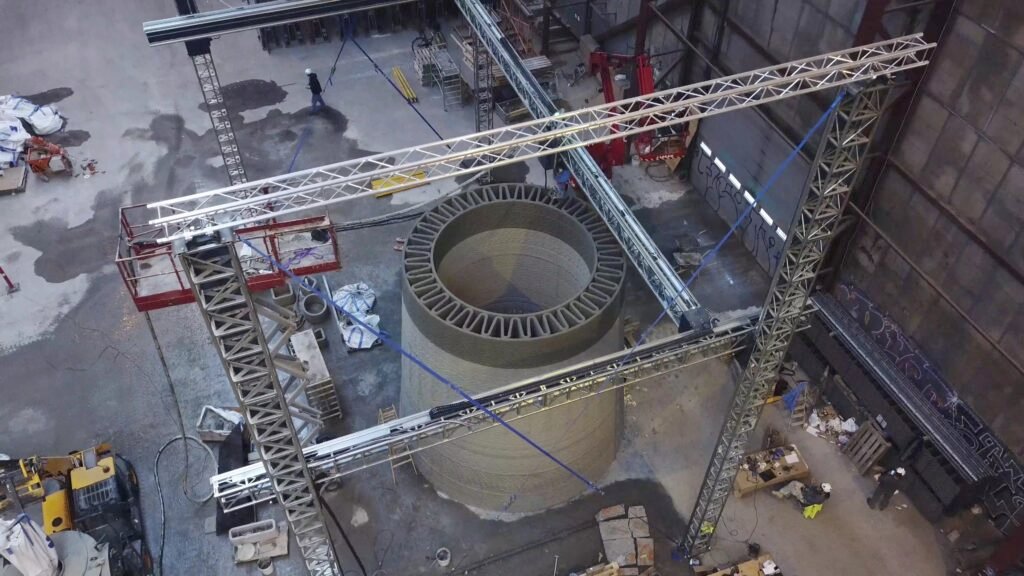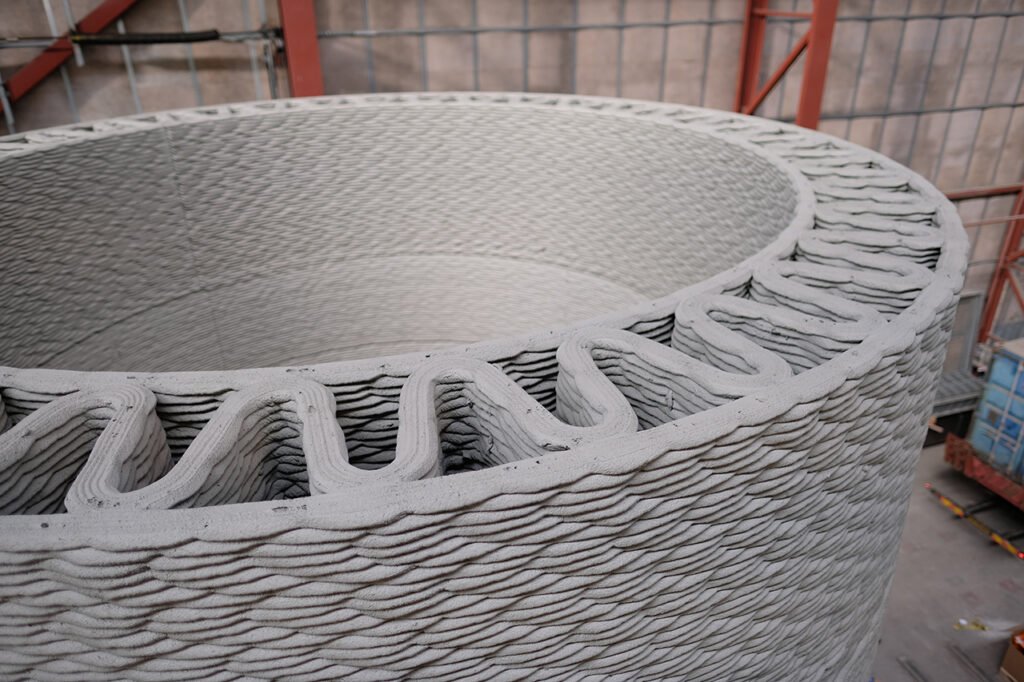Taller wind turbines provide a number of benefits over their shorter counterparts. They can reach higher altitudes where winds are stronger, without being hindered by vegetation, terrain, or buildings.
Because of the increased height, longer blades may be used, allowing a single turbine to gather more energy. Cost savings can also add up with higher, longer wind turbines.

However, shipping large sections of traditional steel tower may be a logistical nightmare, making higher towers difficult to build in areas where road curvature and other infrastructure are a problem.
Prefabricated concrete bases large enough to sustain a larger structure face similar challenges.
Modular construction is one answer to the problem. This strategy is gaining traction in the turbine tower industry, and GE has added 3D printing to the mix.

The plan is to transfer the printer to the construction site and print the concrete base there. Labor expenses become more affordable because just a few individuals are required to run the printer at this level.
GE is pushing for taller wind turbines because thousands of existing wind turbines in the United States are already starting to age out, and the turbine repowering trend is even affecting wind farms in the planning stages, allowing developers to cut costs by reconfiguring their arrays to accommodate fewer turbines.
When bigger towers are added to the mix, the payout for repowering ageing wind farms may become attractive.

Even without a wind turbine update, the gain is considerable, according to GE’s data. At 80 metres in height, the typical 5-megawatt turbine generates 15.1 gigatonne-hours per year, according to the business. At 160 metres in height, the same turbine could produce 20.2 gigatonnes of power.
A new 3D printer has been developed for this purpose. It has the height of a three-story structure and is the world’s largest of its kind. If everything goes as planned, 3D printing might also transform the game for onshore wind development.
This is a Globewire Feed; edited by Clean-Future Team






